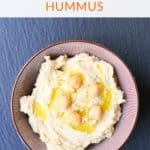This creamy traditional Lebanese hummus recipe is what you think of when you think of classic, Middle Eastern dips. It’s an easy-to-make homemade hummus that pairs with anything you love to dip.
*This post contains compensated links. Find more info in my DISCLAIMER. As an Amazon Associate I earn from qualifying purchases.
What Is A Lebanese Recipe For Hummus
Hummus is sort of becoming a household food word. It wasn’t always like that. Now, there are seemingly dozen of flavors and types of hummus available at the supermarkets.
Nothing, though, beats the classic Middle Eastern hummus, particularly one made at home. I love making hummus at home. This lets me control the ingredients and try to keep out nasty preservatives in the store-bought varieties.
Every mother or grandmother in the Middle East probably has their own recipe for hummus. People add different amounts of both lemon juice and fresh garlic based on their tolerance for tang and spice. I add a bunch of both for balance.
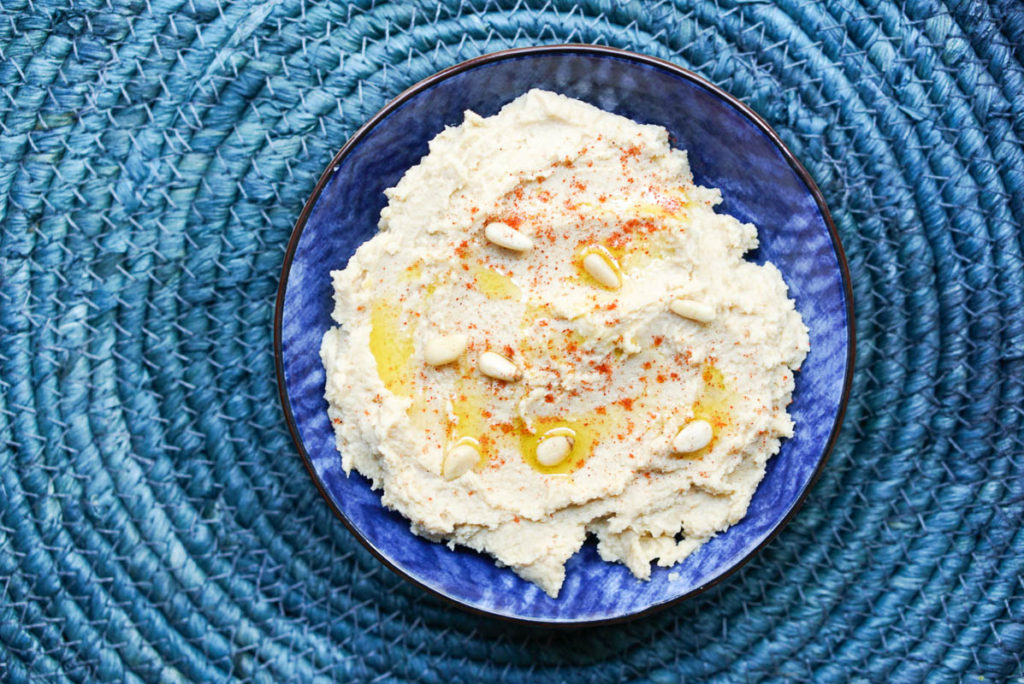
Check out this Lebanese Lemon Lentil Soup Recipe for more ways to cook Lebanese style cuisine.
Why Is This The Best Lebanese Hummus Recipe
To me, this is the best recipe because it is simple, classic, and if you make hummus regularly you probably have a lot of the ingredients already at home. It’s also great to make because it is so classic it can be paired with everything, from pita chips to celery sticks to apple slices.
Check out our other hummus recipes:
Moroccan Inspired Harissa Hummus
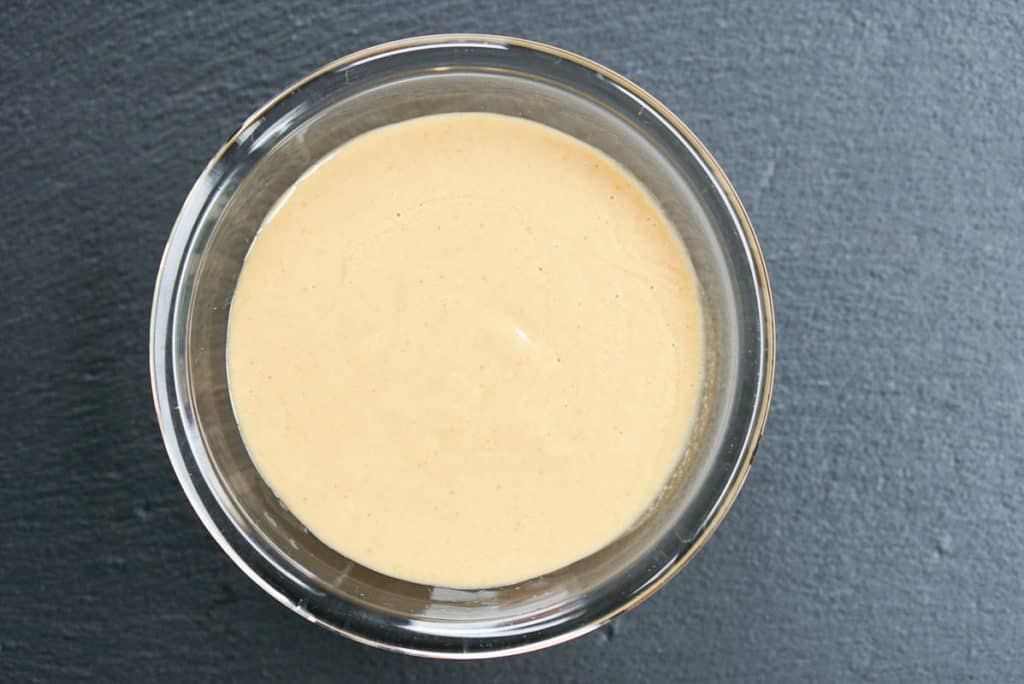
What Is Tahini
Tahini is a word that is thrown around a lot, particularly with classic hummus recipes. I also see it a lot in dressings and on restaurant menus. When I started making hummus at home, though, I realized that tahini is a versatile ingredient. Now I use it in dressings, but really always have some in my cupboard, mostly for making hummus.
Tahini is made from toasted, ground sesame seeds. The seeds are pulverized and turned into a thick paste. It has a similar texture to almond butter, but even more thin. When using tahini at home, it’s important to stir it well so that each recipe includes the right consistency.
Although once you could only buy tahini at health food stores, or places like Whole Foods, it’s pretty common to find now at most supermarkets. Or, you can buy tahini on Amazon here. Once opened, you can keep some brands for a few weeks after opening.
How To Prepare Chickpeas For Lebanese Style Hummus
There are a few different ways to prepare chickpeas when making hummus at home. Choose which one works for you depending on time and your tastebuds. The quickest way is to rinse canned chickpeas under cold water. Then, add them to the blender with the rest of the ingredients.
Or, you can boil the chickpeas in a little salted water or water with a bit of baking soda. When boiled for about 10 minutes, the chickpeas are softer. This makes the hummus more smooth and easier to blend.
For next-level creaminess, remove the chickpea shells. This isn’t required. It’s totally okay to eat the soft outer shell of the chickpeas, but it does make the hummus more smooth. You can do this manually, or by rubbing the cooked chickpeas between two paper towels.
Ingredients For This Authentic Lebanese Hummus Recipe
In addition to rinsed and drained chickpeas, the other ingredients are pretty classic. Mix fresh lemon juice, quality olive oil, and tahini, along with salt, cumin, and fresh garlic.
Tahini forms the base of so many hummus recipes, but it’s the reliance on Middle Eastern ingredients like garlic, lemon juice, and olive oil makes it Lebanese.
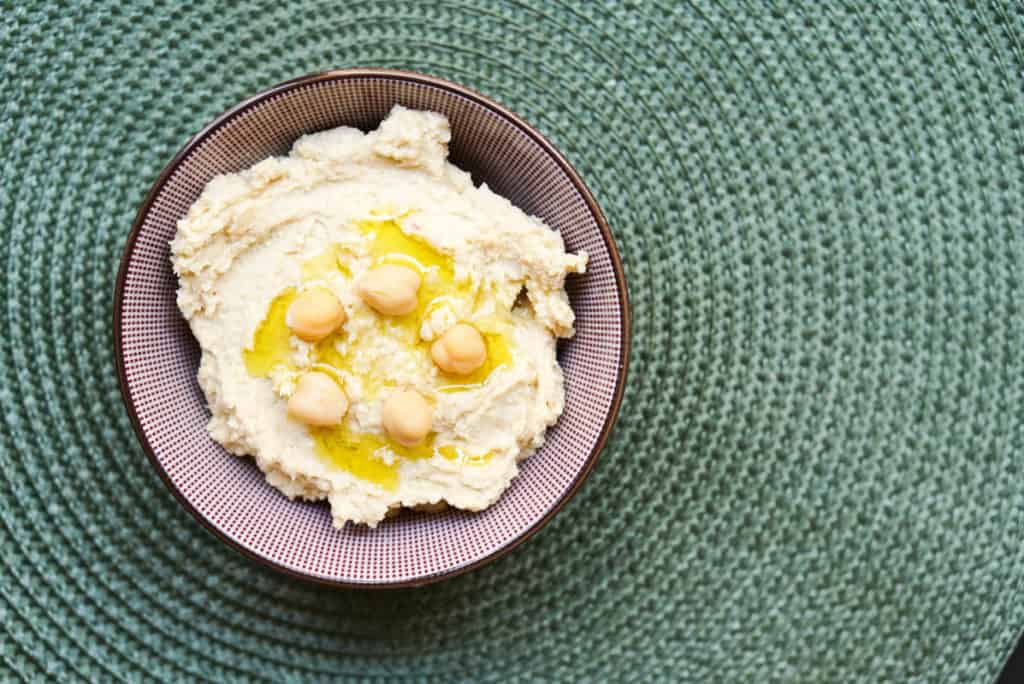
How To Make Classic Hummus
Choose your chickpea preparation method from above. I generally just rinse and drain when making hummus for the two of us at home. I balance the quickness of the recipe with the fact that I don’t mind the texture of the hummus.
Take the fresh garlic and run it through a garlic press. Try the Zulay stainless steel press, which is easy to use. There’s no need to even peel the garlic ahead of time. Add the juice of one fresh lemon, one half of the olive oil, salt, cumin, and tahini and blend well.
Put aside 4 or 5 chickpeas to use as garnish. This is the way hummus is often served in the Middle East. Add the chickpeas and mix until the hummus is smooth, creamy, and has the desired consistency.
Add the second tablespoon of olive oil to help with the blending. Adjust the salt or add a little more lemon juice if needed.
Traditional Lebanese Hummus Recipe
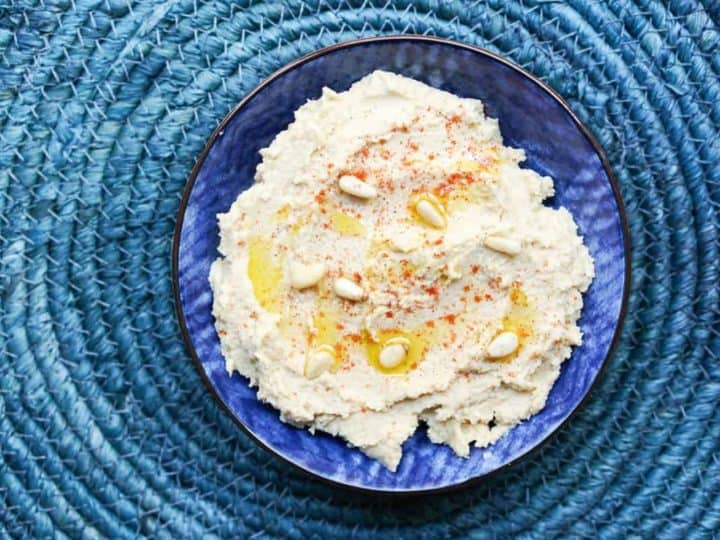
This creamy traditional Lebanese hummus recipe is what you think of when you think of classic, Middle Eastern dips. It’s an easy-to-make homemade hummus that pairs with anything you love to dip.
Ingredients
- 3 cloves of garlic, pressed
- 2 tablespoons of olive oil
- 2 tablespoons of tahini
- Juice of one lemon
- 2 teaspoons of ground cumin
- 1 15 ounce can of chickpeas, rinsed and drained
- Salt to taste
Instructions
- Add the pressed garlic, one half of the olive oil, lemon juice, salt, cumin, and tahini and blend well.
- Put aside 4 or 5 chickpeas to use as garnish.
- Add the chickpeas and mix until the hummus is smooth, creamy, and has the desired consistency. Add the second tablespoon of olive oil to help with the blending.
- Adjust the salt or add a little more lemon juice if needed.
- Garnish with fresh chickpeas, olive oil, pine nuts, or olive oil
Notes
If you are not used to making hummus at home, check our tips for making hummus above.
Recommended Products
As an Amazon Associate and member of other affiliate programs, I earn from qualifying purchases.
Nutrition Information
Yield
6Serving Size
1Amount Per Serving Calories 194Total Fat 9gSaturated Fat 1gTrans Fat 0gUnsaturated Fat 7gCholesterol 0mgSodium 108mgCarbohydrates 22gFiber 6gSugar 4gProtein 7g
This nutritional data is provided by a third-party source and should not be relied on if you are on a strict diet.
How To Serve Lebanese Hummus
Because this is a more classic hummus recipe, serve it how you would any hummus. This includes pita chips, tortilla chips, or pretzels. Vegetables like celery sticks, cucumber sticks, and carrot sticks also work, as do apple wedges.
If serving hummus when entertaining, dress it up with a good drizzle of high-quality olive oil. We always keep a cooking olive oil and a “better” olive oil at home. This is the time to break out the good stuff.
Sprinkle the hummus with fresh, whole chickpeas, pine nuts, or even a bit of paprika for color. For even more color, try some chopped fresh parsley.
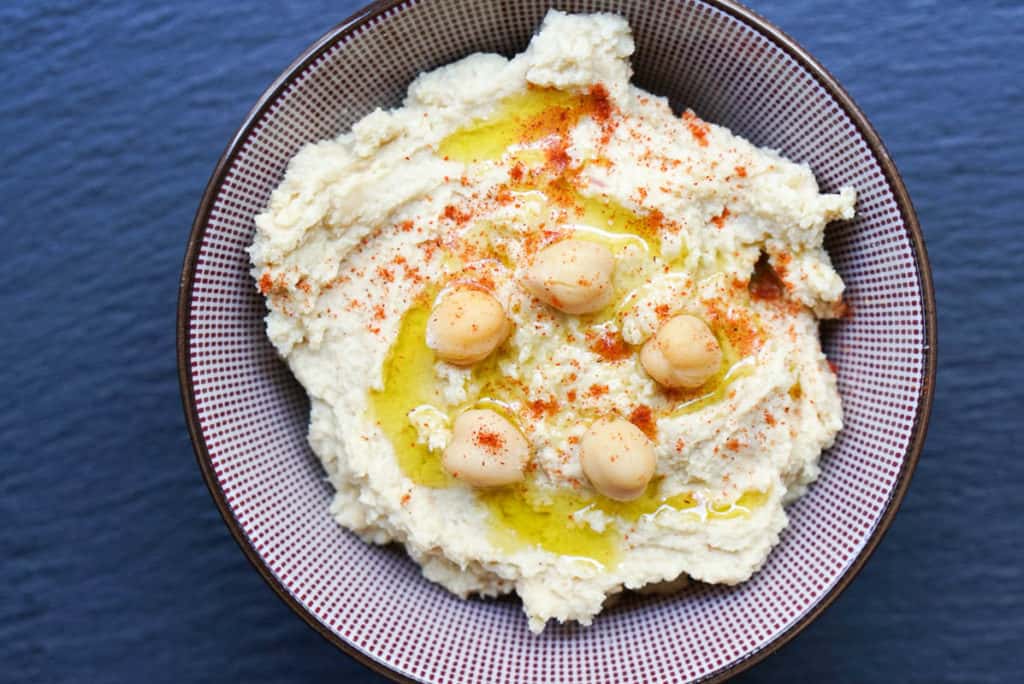
FAQs – Making Hummus With Canned Chickpeas
You can keep hummus in the fridge for up to 5 days, but it never lasts that long in our house. When removing it from the fridge, it can be thicker. Blend a little fresh olive oil into the hummus to revive it.
Hummus is classically served as a dip, but it also makes a great spread for sandwiches. Even a simple sandwich of classic or flavored hummus and sliced cucumber can be a great snack.

